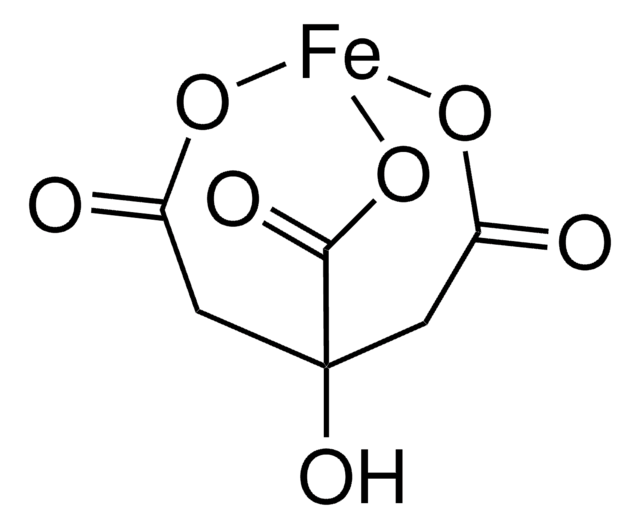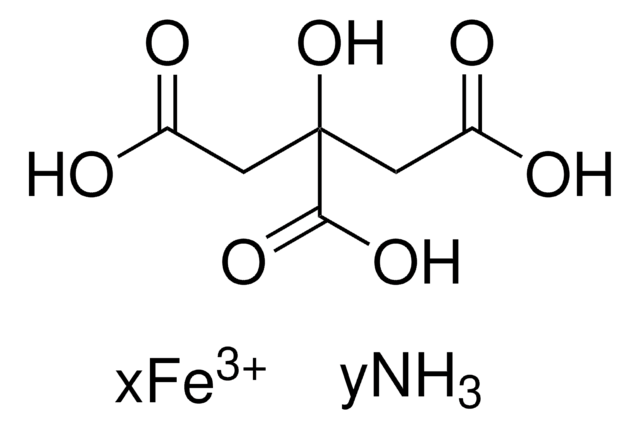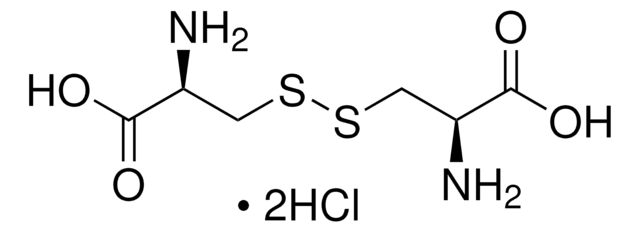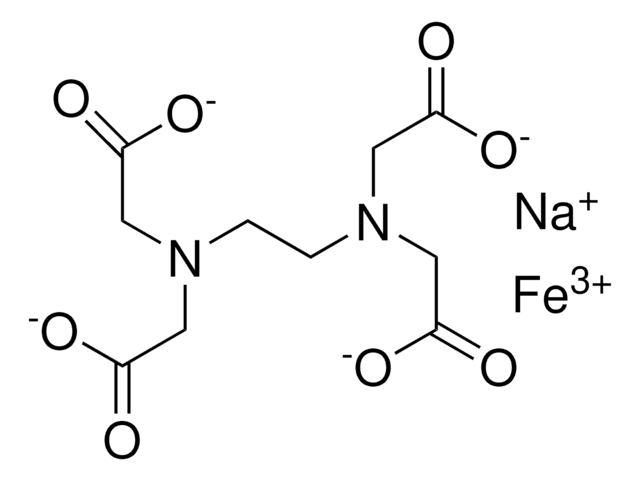RES4055F-A7
Ferric citrate
Pharma Manufacturing
Synonym(s):
Iron(III) citrate tribasic monohydrate, Ferric citrate monohydrate
About This Item
Recommended Products
biological source
synthetic
Quality Level
form
powder
impurities
Trace metals; tested
suitability
suitable for manufacturing use
SMILES string
OC12CC(=O)O[Fe](OC(=O)C1)OC2=O
InChI
1S/C6H8O7.Fe/c7-3(8)1-6(13,5(11)12)2-4(9)10;/h13H,1-2H2,(H,7,8)(H,9,10)(H,11,12);/q;+3/p-3
InChI key
NPFOYSMITVOQOS-UHFFFAOYSA-K
Looking for similar products? Visit Product Comparison Guide
General description
M-Clarity Program
Our comprehensive portfolio of upstream process chemicals not only provides biopharmaceutical manufacturers with high-quality raw materials for production of classical and novel therapies, but also helps them get to market faster and simplify regulatory challenges. Trust us to deliver supply chain transparency and reliable sourcing around the globe, streamlining your product qualification with best-in-class regulatory support and service.
Packaging
RES4055F-A702X: 1 kg container
RES4055F-A703X: 5 kg container
Legal Information
Signal Word
Warning
Hazard Statements
Precautionary Statements
Hazard Classifications
Eye Irrit. 2
Storage Class Code
11 - Combustible Solids
WGK
WGK 2
Flash Point(F)
Not applicable
Flash Point(C)
Not applicable
Choose from one of the most recent versions:
Already Own This Product?
Find documentation for the products that you have recently purchased in the Document Library.
Customers Also Viewed
Our team of scientists has experience in all areas of research including Life Science, Material Science, Chemical Synthesis, Chromatography, Analytical and many others.
Contact Technical Service









